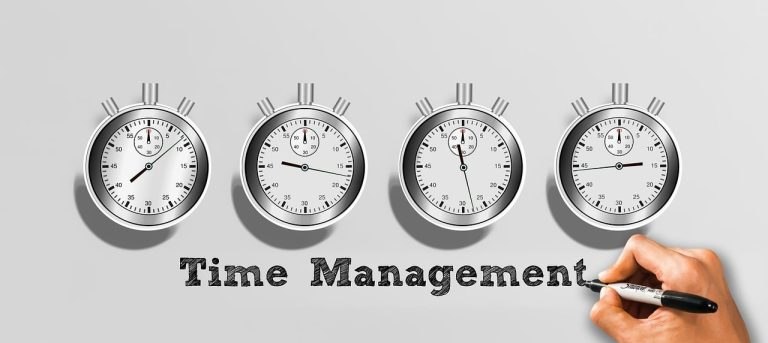In The Hitchhiker’s Guide to the Galaxy by Douglas Adams, we’re told that the answer to the ultimate question of life, the universe, and everything is the number 42. For me, the answer is a bit more practical: the real secret is knowing how to negotiate.
And no – this isn’t just about contracts and pricing. It’s about how we constantly navigate daily life and relationships. We negotiate every single day, whether it’s about who does the dishes or how we balance our own needs against those of others. Negotiation is about flexibility, creativity, and the ability to see things from multiple perspectives.
An Open Mind Makes Anything Possible
My life philosophy – everything is negotiable – is rooted in having an open mind. That’s also the name of my website: Open Mind. I’ve never been limited by traditional education or rigid rules, and that’s given me the freedom to think outside the box – or rather, to never have a box at all.
But this way of thinking isn’t just philosophical. It comes from lived experience. I’ve often had to figure things out on my own. As a child, we moved frequently because my mother was always chasing new job opportunities. As a result, I rarely formed long-term friendships and had to constantly adapt to new surroundings. The outcome? I became someone who spends hours figuring things out for myself rather than asking others and getting a quick answer.
The upside? I often discover things I didn’t even know I was looking for – and develop a much broader understanding than if I’d just been handed the answer. The downside? It takes time. Sometimes more than necessary. Still, this approach has shaped me into a curious, creative, and knowledge-seeking person – traits that have proven invaluable in both my career and life in general.
This flexibility and curiosity are exactly what allow me to find solutions that work for all parties – even when challenges seem locked in place at first glance.
Negotiation Is Also a Conversation With Ourselves
When we enter negotiations – whether with others or with ourselves – it’s all about being pragmatic. What are we really trying to achieve? Where can we be flexible? And what’s truly non-negotiable? This applies just as much at work as it does in our personal lives.
One of the most important lessons I learned in a school course on communication and media was this: Communication always involves two or more parties. It’s not just about what the sender says – it’s also about how the message is received. This perspective is essential in any negotiation, where success often depends on both sides feeling they’ve gained something of value. The best outcomes happen when both the sender and receiver feel heard – when they meet on common ground.
As a former colleague once put it: “The best business deals are the ones where both the seller and the buyer are a little unhappy.” That means both had to give something up and meet halfway – often the very essence of a sustainable and balanced agreement.
Pragmatism as a Driving Force
For me, pragmatism is about finding solutions that actually work – not chasing unattainable perfection. As Voltaire, the French writer and philosopher, famously said: “Don’t let the perfect be the enemy of the good.” That idea has been a guiding principle for me, both professionally and personally.
When I worked with video conferencing solutions, there was rarely a single “perfect” option. It was about balancing needs: quality, price, and usability. Progress didn’t come from waiting for the ideal product – it came from continuous improvement, one step at a time.
Being pragmatic means taking a practical and realistic approach to problems and situations – focusing on what works in practice rather than what’s theoretically ideal. It’s about adapting and evaluating solutions based on real-world results, not rigid theories. In other words: it’s about doing what works – here and now.
In practice, pragmatic thinking can mean:
- Solution-focus: You look for what can be done, instead of getting stuck chasing the perfect fix.
- Flexibility: You adjust your plans based on what proves most effective in real life.
- Result-orientation: You assess actions and decisions based on what outcomes they actually deliver – not how well they align with abstract models.
In short: A pragmatic approach is about doing what makes sense in the current context – one achievable step at a time.
ChatGPT
Technology – A Never-Ending Negotiation
Technology is a great example of how negotiation is a part of everything we do. When I worked with video conferencing, it was all about balancing conflicting needs: quality, price, ease of use, connection time, layout, and collaboration features. In fact, technology development itself is a constant negotiation – between what’s possible and what’s desirable.
Just look at the history of communication: from handwritten letters to telegraph, telephone, email, fax – and now video meetings. Each innovation has been a step toward more effective communication. Maybe one day we’ll achieve teleportation – the ultimate presence. But instead of waiting, we keep improving. Negotiation between reality and ambition is what drives progress.
Relationships Are Built – and Balanced – Through Negotiation
Whether personal or professional, relationships also rely on negotiation. As one of my former managers once said: “A good deal is when both the buyer and seller are a little dissatisfied with the price.” That’s the heart of negotiation: no one gets everything, but everyone gets something that matters.
Of course, negotiation isn’t always easy. Cultural differences, power dynamics, and rigid systems can all present challenges. But with an open mind and a pragmatic approach, we can often tackle those challenges in ways that create value – for ourselves and for others.
So the next time you face a challenge, remember this:
Everything is negotiable. It’s just about finding the solution that works for both sides – one compromise at a time.
What are you facing right now that might be solved with a fresh perspective – or a well-handled negotiation?
Feel free to share your thoughts in the comments, or reach out if you’d like to bounce ideas around. Sometimes, the missing piece is just a good conversation away.





